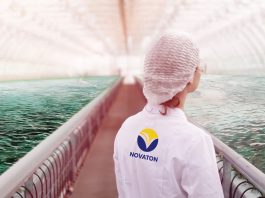A Horizon 2020 project, led by from Chalmers University of Technology, Sweden, has been granted €4.3m from the EU for the team to develop a new energy system for capturing and storing solar energy.
The project will use specially designed molecules to develop prototypes of the new technology for larger scale applications, such as heating systems in residential houses. In several scientific articles since 2018, a group of researchers from Chalmers University of Technology has demonstrated how its specially designed molecule and solar energy system, named MOST (Molecular Solar Thermal Energy Storage System), can become a vital tool in capturing and storing solar energy.
The technology is based on a specially designed molecule which when hit by sunlight changes shape into an energy-rich isomer – a molecule made up of the same atoms but arranged together in a different way. The isomer can then be stored for later use when needed, such as at night or in winter. A specially designed catalyst releases the saved energy as heat while returning the molecule to its original shape, so it can then be reused in the heating system.
Energy suppliers can use the MOST system for capturing and storing solar energy for up to 18 years and transport it without any major losses. The results achieved in the lab by the researchers are clear, but now more experience is needed to see how MOST can be used in real applications and at a larger scale.
“The goal for this EU-project is to develop prototypes of MOST technology to verify potential for large-scale production, and to improve functionality of the system,” says Kasper Moth-Poulsen, coordinator of the project, and professor and research leader at the Department for Chemistry and Chemical Engineering at Chalmers.
The research team used the technology in a window film to even out the temperature on hot days. Outside the EU project, application of the molecule in blinds and windows has begun, through the spin-off company Solartes AB. “A very exciting aspect of the project is how we are combining excellent interdisciplinary research in molecule design along with knowledge in hybrid technology for energy capture, heat-release and low-energy building design,” says Moth-Poulsen.









